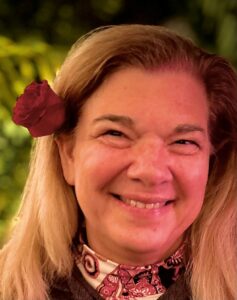Hello, AEA365 community! Liz DiLuzio here, Lead Curator of the blog. This week is Individuals Week, which means we take a break from our themed weeks and spotlight the Hot Tips, Cool Tricks, Rad Resources and Lessons Learned from any evaluator interested in sharing. Would you like to contribute to future individuals weeks? Email me at AEA365@eval.org with an idea or a draft and we will make it happen.

Hi, I’m Kim Norris, Monitoring, Evaluation and Learning (MEL) Director for American Institutes for Research (AIR)’s International Development Division. I’ve had the joy of establishing, contributing to and benefiting from a number of Communities of Practices (CoPs) in the field of evaluation since beginning professional work too long ago to mention here. From exchanging ideas and perspectives with peers from around the world, to improving skills and learning from our unique and sometimes shared experiences, CoPs have been invaluable to my own development. Like any evaluator, I also realize that for CoPs to be successful, guidelines and measures help everyone involved make full use of CoP resources and opportunities. So, I developed a checklist and questions gathered from experiences, discussions with colleagues and the many resources available on the subject.
GATHER: Establish a clear means of communication for all members of the community. This could include a virtual platform, social media channels or other forums. This should be tailored to the specific needs and interests of the group and ensure inclusivity. Time zones, first languages, professional and personal life needs, and connectivity can all play a part in determining best modes, methods and times for an inclusive practice.
- How well is the communication mode/ method/ time working for you?
- How well are your needs considered in our plans?
COLLABORATE and DESIGN: Establish a key set of feasible objectives for the community together and co-develop a plan to ensure that goals are met and checked on. Encourage collaboration between members with different skill sets, perspectives, and backgrounds by providing different opportunities and resources of varying types to stimulate ongoing learning.
- Have we chewed off more than we can handle or are our goals and objectives feasible?
- How relevant are our objectives to you now? What needs to change in your view, and why?
ENGAGE: Creating and share opportunities for members to participate in additional activities such as discussion groups, sharing ideas and resources, and attending virtual events shared with the group. Have a strong knowledge management plan to support resource access and use. Meet individual, group, and organizational goals while creating an increasing cycle of participation and contribution.
- How well are you able to participate/ access resources? Interested in participating/ using resources?
- What is working well for your participation level? What would you like to have changed?
- In what other ways, if any, would you like to participate?
- To what degree are you growing professionally from the CoP? What would help your growth?
EVALUATE: Set up a system to regularly assess the progress of the community and evaluate its effectiveness. This could include collecting feedback from members on their experience with the community.
- What are we asking that we no longer need to ask?
- What should we ask that we are not yet asking?
- How should we change what, how and when we are asking ourselves about the CoP?
ADAPT AND SUSTAIN: Use the evaluation process to identify areas of improvement and develop strategies to address them. This includes incorporating new ideas, refining existing processes or creating new resources for members. Evaluation and periodic reflection sessions ensure the community’s objectives remain relevant to members by regularly assessing and updating them.
Rad Resources
The EDUCAUSE Learning Initiative (ELO) developed this (2005) Community of Practice Design Guide: A Step-by-Step Guide for Designing & Cultivating Communities of Practice in Higher Education | EDUCAUSE Library with practical steps for developing a CoP.
This publication by Marta Kowalczuk-Wal?dziak & James M. Underwood in Educational Studies (2021) is interesting as it describes how international communities of practice can be successful vehicles for teachers’ professional development.
Do you have questions, concerns, kudos, or content to extend this aea365 contribution? Please add them in the comments section for this post on the aea365 webpage so that we may enrich our community of practice. Would you like to submit an aea365 Tip? Please send a note of interest to aea365@eval.org . aea365 is sponsored by the American Evaluation Association and provides a Tip-a-Day by and for evaluators. The views and opinions expressed on the AEA365 blog are solely those of the original authors and other contributors. These views and opinions do not necessarily represent those of the American Evaluation Association, and/or any/all contributors to this site.
